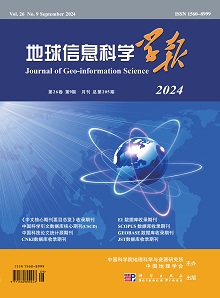基于BJ-1小卫星遥感数据的海岸工程变化检测对比研究
引用次数: 0
摘要
海岸带工程对海岸带的经济发展和生态环境有着重要的影响。因此,海岸工程监测是海岸带遥感监测的一个热点。自20世纪80年代以来,卫星遥感已成为探测海岸工程动态变化不可缺少的技术。海岸带工程变化的准确性取决于遥感数据的适用性和变化检测方法的可行性。北京一号小卫星是中国自主研制的卫星,在环境与灾害监测、城市管理与建设、国土资源调查等方面取得了丰硕成果。然而,关于BJ-1小卫星在海岸工程监测中的应用研究很少。通过对各种典型检测方法的比较,总结出一种高精度、稳定的利用BJ-1小卫星遥感数据监测沿海工程的方法。基于“北京一号”小卫星数据特征,采用不同检测方法对天津港和曹妃甸港2个重点区域沿海工程2006 - 2010年的变化进行了调查,并对检测结果进行了评价。研究结果表明,在利用BJ-1遥感数据的检测方法中,波段替代技术与支持向量机分类相结合的方法检测海岸工程变化的精度最高。第二种最精确和最稳定的方法是面向对象分析。这些结果表明,北京一号遥感数据满足不同海岸工程监测精度要求。同时,结合波段替代和支持向量机分类技术,以及面向对象的分析方法,在不同的海岸工程监测中具有最高的准确性和稳定性。本文章由计算机程序翻译,如有差异,请以英文原文为准。
The Comparative Study of the Change Detection in Coastal Engineering Using BJ-1 Small Satellite Remote Sensing Data
The coastal engineering exerts a great impact on the economic development and ecological environment of the seacoast.Thus,coastal engineering monitoring is a focus in coast zone remote sensing and monitoring.Since the 1980s,satellite remote sensing has become an indispensable technique in detecting the dynamic changes of coastal engineering.The accuracy of changes in coastal engineering is determined by the applicability of data obtained from remote sensing system and the feasibility of the methods in detecting the changes.As a satellite developed by China,the BJ-1 small satellite has already obtained numerous achievements in environment and disaster monitoring,urban management and construction and national land resource surveying.However,little has been investigated concerning the utilization of BJ-1 small satellite in monitoring the coast engineering.We compared various typical detection methods,and summarized a highly accurate and stable method in monitering the costal engineering with BJ-1 small satellite remote sensing data.Different detection methods were applied to investigate the changes in 2 key areas-Tianjin Port and Caofeidian Port costal engineering from 2006 to 2010 based on the characteristics of BJ-1 small satellite data,and evaluated the detected results.Our findings showed that among the detecting methods with BJ-1 remote sensing data,the maximum precision was obtained when waveband substitution technique was combined with SVM classification to detect the changes in costal engineering.The second precisest and stablest method was object-oriented analysis.These results indicate that,BJ-1 remote sensing data meet the requirements for accuracy in different costal engineering monitoring.Meanwhile,combination of waveband substitution and SVM classification technique,as well as object-oriented analysis,has the highest accuracy and stability in different costal engineering monitoring.
求助全文
通过发布文献求助,成功后即可免费获取论文全文。
去求助
来源期刊
CiteScore
2.70
自引率
0.00%
发文量
3757
期刊介绍:
Journal of Geo-Information Science is an academic journal under the supervision of Chinese Academy of Sciences, jointly sponsored by Institute of Geographic Sciences and Resources, Chinese Academy of Sciences and Chinese Geographical Society, and also co-sponsored by State Key Laboratory of Resource and Environmental Information System, Key Laboratory of Virtual Geographic Environment of Ministry of Education and Key Laboratory of 3D Information Acquisition and Application of Ministry of Education. Founded in 1996, it is openly circulated in the form of a monthly magazine.
Journal of Geoinformation Science focuses on publishing academic papers with geographic system information flow as the main research object, covering research topics such as geographic information cognitive theory, geospatial big data mining, geospatial intelligent analysis, etc., and pays special attention to the innovative results of theoretical methods in geoinformation science. The journal is aimed at scientific researchers, engineers and decision makers in the fields of cartography and GIS, remote sensing science, surveying and mapping science and technology. It is a core journal of China Science Citation Database (CSCD), a core journal of Chinese science and technology, a national Chinese core journal in domestic and international databases, and it is included in international databases, such as EI Compendex, Geobase, and Scopus.

 求助内容:
求助内容: 应助结果提醒方式:
应助结果提醒方式:


